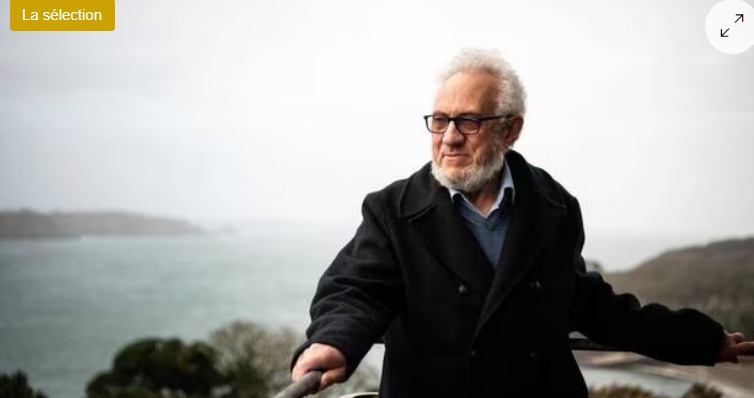In the Ecuadorian Galapagos archipelago, a biodiversity paradise classified by UNESCO as a world heritage site, the protected marine fauna around the islands is threatened offshore by the industrial fishing fleets that prowl. One solution: extend protection by demarcating a global marine reserve on the high seas.
The idea is supported by Greenpeace, which carried out a new expedition at the beginning of March around these rocky islets in the Pacific, home to exceptional flora and fauna.
An AFP team was able to take part aboard the Arctic Sunrise alongside scientists whose objective is to highlight « probably the best conservation project carried out in the oceans » as well as the risks posed by weigh, further offshore, overfishing.
– DNA and biomass –
Biologist Paola Sangolqui carries out deep-water extractions to “know which marine species have stayed in this area and left traces of DNA there”.
Daniel Armijos is responsible for “remote underwater video stations with bait” to check the presence of certain species, count them, compare with the DNA samples collected or even calculate the biomass.
A robot was also sent to study the corals and the different habitats, adds Sophie Cooke, in charge of the expedition, according to whom “the abundance of marine life in this national park is simply astonishing”.
“All this information is a bit like putting together a big puzzle” because “these areas (of the eastern Pacific) are ecologically connected, everything is linked”, summarizes the other scientist on board, Stuart Banks.
Marine species “do not understand political boundaries. They move between different territories and that is where they are most in danger, particularly because of industrial fishing,” he emphasizes.
– Shark Sanctuary –
Privileged tourists marvel at “the incredible marine fauna”, like “these schools of fish which surround you to the point of creating almost total darkness”, says Australian diver Liam Doherty, 34 years old. “We see all the good of conservation here, it’s extraordinary! », adds Ryan Doyle, 24, from the United States.
“Today we live more from tourism than from fishing,” comments Anthony Gavilanes, 30, a local diving instructor: “species swimming freely in the water are worth more than on a platter served at the table.”
Sharks, turtles, iguanas, sea lions and fish of all kinds abound in the waters of the Galapagos, where Charles Darwin gave birth to his theory of evolution.
The archipelago has also become « a sanctuary for sharks », in particular for the hammerhead shark, a species considered « endangered » by the International Union for Conservation of Nature (IUCN), « because of overfishing and illegal fishing,” underlines Eduardo Espinoza, a park employee responsible for monitoring local ecosystems.
“In the Galapagos, they have a refuge to reproduce,” he adds, busy marking the backs of young specimens with a tag.
“But outside the reserve and the 200 nautical mile zone, there are quite large fishing fleets, more than 300 vessels which capture sharks to export them to Asian countries,” he laments.
– Underwater highways –
“A key element is that many of these marine species are migratory,” explains Ms. Cook. “The Galapagos are an important stop on their long journey” in the Pacific, which is why “it is very important to connect all the different marine protected areas” of this eastern Pacific.
Several national marine reserves in Panama, Costa Rica, Colombia and Ecuador form the Eastern Tropical Pacific Marine Corridor (EMAC) « where various species such as sharks, whales, manta rays and turtles transit », explains Ruth Ramos of Greenpeace.
“However, part of it is on the high seas and beyond their jurisdiction,” she says, hence the pressing need to “secure migration corridors”.
Greenpeace thus called on Monday for the creation of a global marine reserve in the high seas off the coast of the Galapagos against “industrial fishing fleets (which) continue to operate in these international waters, undermining national protection efforts and threatening the entire ecosystem of the region.
“This area would thus become the first marine protected area” created on the high seas since the signing in March 2023 of the historic Oceans Treaty.
Signed by 88 countries, this ambitious treaty must regulate the protection of the high seas and the seabed, with the stated objective of protecting 30% of the oceans by 2030.
But only two countries have ratified it to date, although there must be at least 60 countries for it to take effect. However, it is “urgent (…) to bring the treaty to life” and the Galapagos are the ideal place to start, Greenpeace wants to believe.




